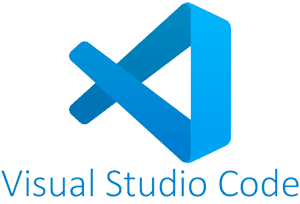Our Alumni Work at Top Companies





LLM Engineering Course Curriculum
It stretches your mind, think better and create even better.
Topics:
1.1 Linear Algebra for LLMs
Matrix operations
Eigenvalues
Tensor mathematics
1.2 Calculus and Optimization
Gradients
Backpropagation
Convergence theory
1.3 Probability and Information Theory
Distributions
Entropy
KL divergence
1.4 Advanced Python Programming
OOP
Async patterns
Memory management
1.5 Development Environment Setup
GPU/TPU
Docker
Experiment tracking
Topics:
2.1 Neural Network Architectures and Backpropagation
2.2 Natural Language Processing Basics
Tokenization
Embeddings
Language modeling
2.3 PyTorch for LLMs
Tensor operations
Autograd
Custom layers
2.4 Sequence Modeling Evolution
RNNs
LSTMs
Attention revolution
2.5 Evaluation Metrics and Benchmarking
Topics:
3.1 Self-Attention Mechanism
Query-Key-Value
Scaled dot-product
3.2 Multi-Head Attention
Parallel computation
Head concatenation
3.3 Positional Encodings
Sinusoidal
Learned
RoPE
ALiBi
3.4 Complete Transformer Components
Layer norm
FFN
Residual connections
3.5 Architecture Variants
Encoder-only
Decoder-only
Encoder-Decoder
Topics:
4.1 GPT Family Evolution
GPT-3
GPT-3.5
GPT-4
Architectural innovations
4.2 Claude, Gemini, and PaLM Architectures
4.3 Open Source Models
LLaMA
Mistral
Falcon
Qwen
4.4 Mixture of Experts (MoE) Systems
4.5 Efficient Attention Mechanisms
Flash Attention
Linear Attention
Topics:
5.1 Long Context Innovations
YaRN
Positional interpolation
5.2 State Space Models
Mamba
RWKV
5.3 Model Scaling Laws
Chinchilla optimal
Compound scaling
5.4 Memory-Efficient Architectures
5.5 Hardware-Aware Design Patterns
Topics:
6.1 Data Collection Strategies
Web crawling
Multilingual data
Domain corpora
6.2 Data Processing Pipeline
Deduplication
Quality filtering
PII removal
6.3 Tokenization Methods
BPE
SentencePiece
Custom tokenizers
6.4 Dataset Mixing and Curriculum Learning
6.5 Data Quality Metrics and Analysis
Topics:
7.1 Language Modeling Objectives
CLM
MLM
T5 span corruption
FIM
7.2 Loss Functions and Perplexity
7.3 Optimization Algorithms
AdamW
LAMB
8-bit optimizers
7.4 Learning Rate Schedules and Warm-up Strategies
7.5 Training Dynamics and Stability
Topics:
8.1 Parallelism Strategies
Data
Model
Pipeline
Tensor
3D parallelism
8.2 Distributed Frameworks
PyTorch FSDP
DeepSpeed ZeRO
Megatron-LM
8.3 Memory Optimization
Gradient checkpointing
Mixed precision
CPU offloading
8.4 Multi-node Training and Communication
NCCL
InfiniBand
8.5 Monitoring and Debugging Distributed Training
Topics:
9.1 Hardware Considerations
GPU/TPU selection
Memory requirements
9.2 Cluster Management
SLURM
Kubernetes
Resource allocation
9.3 Data Infrastructure
High-performance storage
Streaming datasets
9.4 Cost Optimization
Spot instances
Resource utilization
9.5 Reproducibility and Experiment Management
Topics:
10.1 Code Organization and Modular Architecture
10.2 Configuration Management and Version Control
10.3 Continuous Training Pipelines
10.4 Team Collaboration and Knowledge Transfer
10.5 Documentation and Testing Strategies
Topics:
11.1 Task-Specific Fine-tuning Methods
11.2 Multi-Task and Sequential Learning
11.3 Domain Adaptation Techniques
11.4 Catastrophic Forgetting Mitigation
11.5 Training Hyperparameter Optimization
Topics:
12.1 LoRA and QLoRA Implementation
12.2 Prefix and Prompt Tuning
12.3 Adapter Layers and IA³
12.4 PEFT Method Comparison and Selection
12.5 Memory and Compute Efficiency Analysis
Topics:
13.1 Instruction Dataset Creation and Curation
13.2 Supervised Fine-tuning (SFT) for Instructions
13.3 Multi-turn Dialogue Training
13.4 Chain-of-Thought Training
13.5 Popular Instruction Datasets (Alpaca, ShareGPT, FLAN)
Topics:
14.1 Reward Model Training
14.2 PPO Implementation for LLMs
14.3 Alternative Methods (DPO, Constitutional AI, RLAIF)
14.4 Preference Data Collection
14.5 Policy Optimization and Stability
Topics:
15.1 Vertical Fine-tuning (Medical, Legal, Financial, Scientific)
15.2 Multilingual and Cross-lingual Adaptation
15.3 Continual and Few-shot Learning
15.4 Multimodal Extensions
15.5 Code Generation Specialization
Topics:
16.1 Quantization Fundamentals
INT8, INT4, symmetric/asymmetric
16.2 Advanced Methods
GPTQ
AWQ
SmoothQuant
16.3 Mixed Precision Training and Inference
16.4 Implementation Tools
PyTorch
ONNX
TensorRT
16.5 Quality-Performance Trade-offs
Topics:
17.1 Pruning Methods
Magnitude
Structured
Gradual
17.2 Knowledge Distillation
17.3 Neural Architecture Search for LLMs
17.4 Compilation and Graph Optimization
17.5 Kernel Fusion and Optimization
Topics:
18.1 Attention Optimization
Flash Attention
PagedAttention
18.2 KV Cache Management and Compression
18.3 Speculative Decoding
18.4 Batch Processing Strategies
18.5 Memory-Speed Trade-offs
Topics:
19.1 Serving Frameworks
vLLM
TGI
TensorRT-LLM
19.2 API Design
REST
WebSocket
gRPC
Streaming
19.3 Scaling Strategies
Horizontal scaling
Load balancing
19.4 Performance Monitoring and Metrics
19.5 Cost Optimization at Scale
Topics:
20.1 Model Optimization for Edge Devices
20.2 Mobile and Embedded Deployment
20.3 Latency Optimization Techniques
20.4 Resource-Constrained Inference
20.5 Offline Capabilities
Topics:
21.1 Retrieval Strategies and Vector Databases
Vector Indexing
Similarity Search
Dense vs Sparse Retrieval
21.2 Context Management and Chunking
Text Splitting Techniques
Windowing Strategies
Context Length Handling
21.3 Answer Generation and Citation
Citation Handling
Hallucination Reduction
Context-Aware Responses
21.4 Hybrid Search Methods
Combining Dense and Sparse Search
Weighted Retrieval Approaches
Cross-Encoder Ranking
21.5 RAG System Optimization
Latency Optimization
Index Refreshing
Scaling RAG Pipelines
Topics:
22.1 Tool Integration and Function Calling
API Integration
Dynamic Tool Use
Function Calling Frameworks
22.2 Memory Systems and State Management
Short-Term Memory
Long-Term Memory
State Persistence
22.3 Planning and Reasoning Modules
Chain-of-Thought Planning
Hierarchical Task Planning
Reasoning Engines
22.4 Multi-Agent Coordination
Collaborative Agents
Task Delegation
Agent Communication Protocols
22.5 Action Execution Frameworks
Execution Engines
Error Handling
Monitoring Actions
Topics:
23.1 Dialogue Management
Rule-Based Dialogue
LLM-Driven Dialogue
Hybrid Dialogue Systems
23.2 Context Tracking and Session Management
Session Persistence
Conversation History
Multi-Turn Tracking
23.3 Persona Consistency
Persona Design
Consistency Mechanisms
Style Transfer
23.4 Error Recovery and Fallbacks
Fallback Strategies
Clarification Prompts
Error Correction
23.5 Real-time Interaction Optimization
Streaming Responses
Low Latency Techniques
Scalable Conversations
Topics:
24.1 Authentication and Authorization
OAuth2 and JWT
Role-Based Access Control
Single Sign-On
24.2 Audit Logging and Compliance
Activity Logging
Compliance Frameworks
Regulatory Standards
24.3 Data Privacy and Security
PII Handling
Encryption Techniques
GDPR/CCPA Compliance
24.4 API Gateway Integration
Rate Limiting
Request Routing
Authentication at Gateway
24.5 Monitoring and Alerting Systems
System Metrics
Error Tracking
Real-time Alerts
Topics:
25.1 Code Generation Systems
Code Synthesis
Bug Fixing
Code Review with AI
25.2 Multimodal Applications
Text-to-Image
Speech-to-Text
Vision-Language Models
25.3 Streaming and Real-time Processing
Streaming Data Pipelines
Low Latency APIs
Real-time Model Serving
25.4 Hybrid ML/LLM Systems
Combining Classical ML with LLMs
Rule-Based + AI Systems
Pipeline Orchestration
25.5 Custom Domain Applications
Domain-Specific Tuning
Specialized Datasets
Industry-Specific Solutions
Topics:
26.1 Automatic Evaluation Metrics
Perplexity
BLEU
BERTScore
26.2 Benchmark Suites
MMLU
HellaSwag
HumanEval
26.3 Human Evaluation Protocols
26.4 A/B Testing Frameworks
26.5 Task-Specific Evaluation Design
Topics:
27.1 Toxicity and Bias Detection
27.2 Hallucination Mitigation
27.3 Factuality Checking Systems
27.4 Adversarial Testing
27.5 Red Teaming Methodologies
Topics:
28.1 Testing Strategies for LLMs
28.2 Integration and Regression Testing
28.3 Performance Testing at Scale
28.4 Security Testing
28.5 Continuous Evaluation Pipelines
Topics:
29.1 Emerging Architectures
Next-gen transformers
29.2 Training Innovations
Flash Attention 3
Ring Attention
29.3 Extreme Optimization
1-bit LLMs
Sparse models
29.4 AGI Progress and Reasoning
29.5 Multimodal and Embodied Intelligence
Topics:
30.1 Project 1
Train Your Own LLM (Complete pipeline from data to deployment)
30.2 Project 2
Enterprise RAG Platform (Production-grade system)
30.3 Project 3
Specialized Domain LLM (Healthcare/Finance/Legal)
30.4 Project 4
High-Performance Inference System
30.5 Project 5
Research Paper Implementation
TOOLS & PLATFORMS



















Our AI Programs
3 Months
6 Live Projects
4.7/5
AI Agents are autonomous software systems that can perceive their environment, make decisions, and act to achieve specific goals. They combine reasoning...
3 Months
6 Live Projects
4.8/5
Data Science is the field of extracting insights and knowledge from data using statistics, machine learning, and data analysis techniques. It combines programming...
3 Months
6 Live Projects
4.9/5
Generative AI is a type of artificial intelligence that creates new content such as text, images, audio, code, or video based on learned patterns from data. It powers tools like ChatGPT...
3 Months
6 Live Projects
4.8/5
ML Ops (Machine Learning Operations) focuses on managing the end-to-end lifecycle of ML models — from training to deployment and monitoring — ensuring reliability and scalability.
Build a complete multi-agent customer service system with: - Natural language understanding - Intent recognition and routing - Knowledge base integration - Escalation handling - Sentiment analysis - Performance monitoring

Develop an AI research agent capable of: - Literature review automation - Data collection and analysis - Report generation - Citation management - Collaborative research - Quality validation

Create an agent system for business process automation: - Workflow orchestration - Document processing - Decision automation - Integration with enterprise systems - Compliance checking - Performance optimization

LEARNERS
BATCHES
YEARS
SUPPORT
100000+ uplifted through our hybrid classroom & online training, enriched by real-time projects and job support.
Come and chat with us about your goals over a cup of coffee.
2nd Floor, Hitech City Rd, Above Domino's, opp. Cyber Towers, Jai Hind Enclave, Hyderabad, Telangana.
3rd Floor, Site No 1&2 Saroj Square, Whitefield Main Road, Munnekollal Village Post, Marathahalli, Bengaluru, Karnataka.